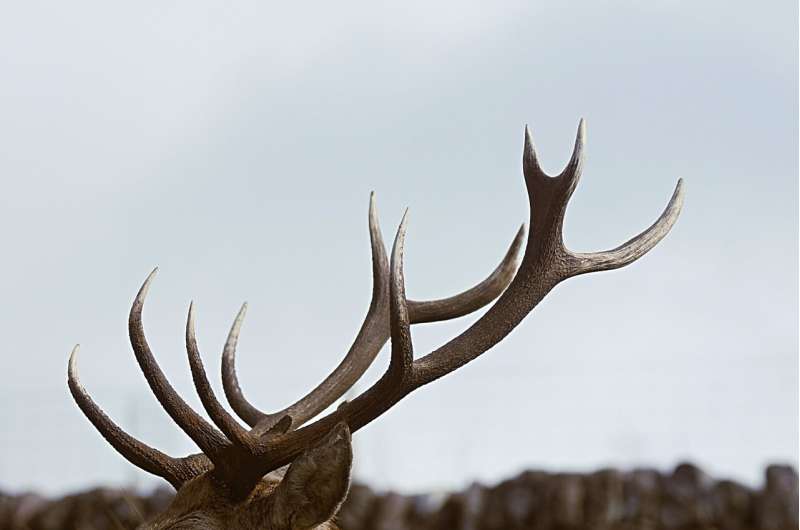March 14, 2023 report
This article has been reviewed according to Science X's editorial process and policies. Editors have highlighted the following attributes while ensuring the content's credibility:
fact-checked
peer-reviewed publication
trusted source
proofread
Regenerating bone with deer antler stem cells

Scientists from a collection of Chinese research institutions collaborated on a study of organ regeneration in mammals, finding deer antler blastema progenitor cells are a possible source of conserved regeneration cells in higher vertebrates. Published in the journal Science, the researchers suggest the findings have applications in clinical bone repair. With the activation of key characteristic genes, it could potentially be used in regenerative medicine for skeletal, long bone or limb regeneration.
Limb and organ regeneration is a long coveted technology in medical science. Humans have some limited regenerative abilities, mostly in our livers. If a portion of the liver is removed, the remaining liver will begin to grow until it reaches its original functional size. Lungs, kidneys, and pancreas can do this also, though not as thoroughly or efficiently.
Compare this to a lizard regenerating a tail, a zebrafish replacing a fin, a lobster regrowing a claw, or an axolotl salamander that can rebuild organs, limbs, spinal cord and even missing brain tissue.
We will not mention the hydra here if only because being able to regenerate itself an entire head after being cut in half (as the other half generates a new body making two hydras) raises too many philosophical questions about the meaning of "self" to tackle here. At least it is beyond the ambitions of current medical researchers considering more modest attempts at human tissue regeneration.
There is one type of mammal that engages in regenerative behavior in a very routine and reliable way, the deer. Male deer antlers regrow yearly as living tissue, with blood vessels and nerves wrapped around a fast growing boney structure. The researchers document a blastema-like structure present during antler regeneration, one similar to the structure involved in amphibian limb regeneration, suggesting a conserved biological feature available to vertebrate tissue regeneration.
There is another mammal with limited ability to regrow parts of a limb—mice. Mice can regenerate the tips of their foretoes. A cross-species comparison found that regenerative progenitor cells similar to those found in the deer antler blastema-like structure are also present in the mouse regenerative foretoe tip but not in nonregenerative mouse toes. These genes were also different from those found in axolotl limbs or zebrafish fins.
According to the study, "This suggests the existence of relatively conserved cellular and molecular mechanisms for the only two known cases of regenerative capacity in mammalian appendage organs."
To fully document the gene transcription dynamics and asses cell type changes during antler regeneration, the research team pursued single-cell RNA sequencing of antlers at different stages of regeneration and a chromosome-level genome assembly of a male sika deer. 74,730 cells covering the critical stages of antler regeneration were analyzed, with some remarkable connections found between cell types reportedly crucial during limb regeneration in frogs and axolotl, as well as digit tip regeneration in mice.
An experiment was performed on mice to test the role of these progenitor cells. In the experiment, antler progenitor cells were introduced to the heads of laboratory mice. Antler-like boney cartilage formations appeared on the skull caps of mice that were not recruited from local tissues but entirely from the growth of transplanted stem cells, showing that the scientists had successfully isolated the essential cell types for regeneration.
More information: Tao Qin et al, A population of stem cells with strong regenerative potential discovered in deer antlers, Science (2023). DOI: 10.1126/science.add0488
Datao Wang et al, Stem cells drive antler regeneration, Science (2023). DOI: 10.1126/science.adg9968
Journal information: Science
© 2023 Science X Network



















